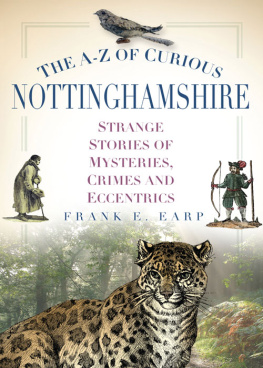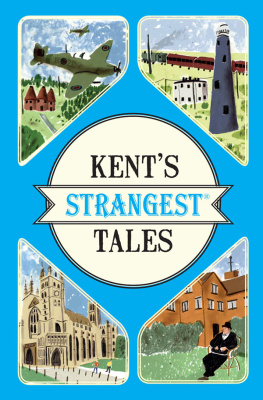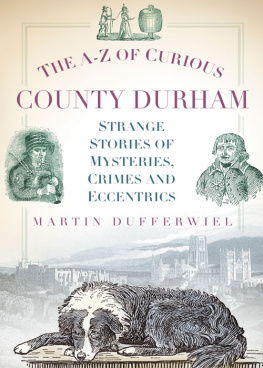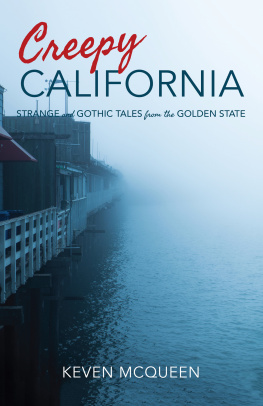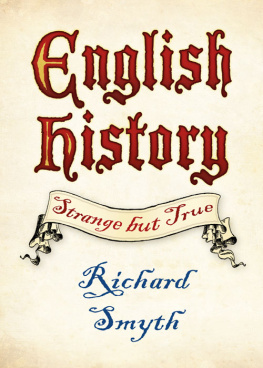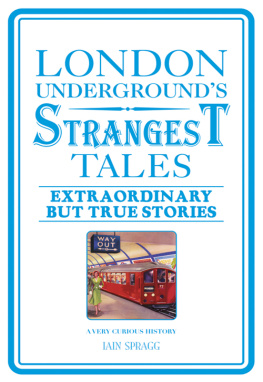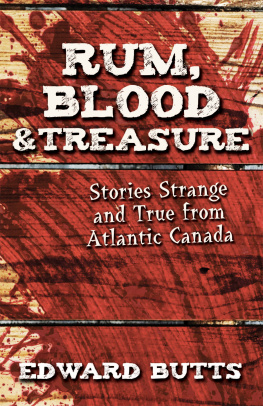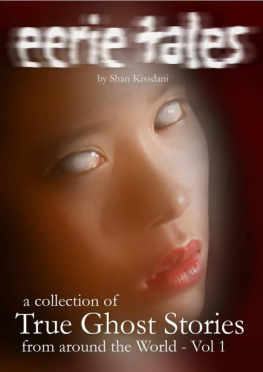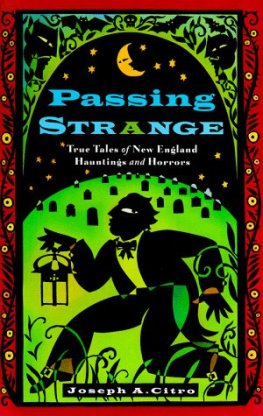
It would not have been possible to produce such a broad collection of stories without help and support. I would therefore like to thank the staff of Liverpool Central Libraries and of the Liverpool Record Office in particular; and the librarians, and many of my fellow proprietors, of the Liverpool Athenaeum. I am, as always, very grateful for their encouragement, time and professionalism.
C ONTENTS
I am a Scouser born and bred, and I am deeply proud of this. I love the city and its people, and the remarkable history and heritage that make these so special. Liverpool in particular, but also so much of the rest of Merseyside, has played a major role in the economic, industrial, commercial and cultural growth and life of Britain and the world. This is why studying and learning about its past is endlessly rewarding.
However, as well as all the important people and significant events that have shaped us, the story of our region is one of fun and fascination. This is especially so when we delve into the more curious stories of the place and of its many eccentric and noteworthy individuals hence this book.
This is an entirely miscellaneous collection of what I think are some of the best tales in the region and those that will amuse, surprise and entertain my readers; in fact, I am sure that there is something for everyone in this assortment. All of my stories are true (although some are more true than others), and they all prove that, indeed, truth is stranger than fiction.
I certainly hope that you enjoy reading these Merseyside Tales just as much as I enjoyed researching and writing them .
So, lets begin with a tale about Cowboys and Indians, and how they came to Liverpool, twice, and how they were brought here by one of Americas most popular folk heroes and greatest showmen, Buffalo Bill Cody.
Ken Pye
Liverpool, 2015

In 1847 the great American Wild West legend Buffalo Bill was born in Iowa, USA. His real name was William Frederick Cody and, when little more than a boy, he became a rider for the pioneer mail delivery service the Pony Express. In 1861 he began working for the US Army as an Indian scout and he fought in the American Civil War from 1861 to 1865.

Buffalo Bills Wild West Show programme cover.
( Discover Liverpool Library )
Cody earned his more familiar nickname when he became a hunter for the Kansas Pacific Railway in 1876, tracking, shooting and killing North American bison, more commonly known as buffalo. This was to supply fresh meat for the workers building the great railway that was connecting the east and west coasts of the fledgling country. Bill was an expert shot with a rifle and very skilled at his trade; so much so that he was said to have killed 4,280 buffalo in eighteen months, and his record was forty-eight of the great animals killed in just fifty minutes.
The problem was that he, and the riflemen he had working for him, almost completely wiped out the species and drove the Plains Indians into starvation as a result. This was one of the causes of the Indian Wars in which Cody fought, gaining popular fame as a Wild West Hero for single-handedly killing Yellowhand, the Cheyenne chief.
Cody became renowned across America and then around the world as the great Buffalo Bill and, in 1884, he began to capitalise on his fame by creating a travelling Wild West Show. He toured the world with this spectacular entertainment, taking it to the greatest cities of the world and, of course, one of the greatest at the end of the nineteenth century was Liverpool. He first brought his show to the crossroads of the British Empire from 618 July 1891, where it was performed twice daily in Newsham Park and what a show it was!
The men and women of this great extravaganza, with their animals and equipment, arrived at Knotty Ash station on Sunday 5th aboard a single train of seventy-two carriages. These were carrying 200 performers, including cowboys, rough-riders and Native American Indians. There were also 200 horses, dozens of covered pioneer wagons and a herd of buffalo! They made their way through the suburbs of Liverpool to the park, attracting vast crowds of astonished onlookers en route.
Thousands of people came from across Merseyside every day, paying 1 s a time to see the show. In the huge outdoor arena they witnessed the roping and branding of cattle, the horsemanship skills of the rough-riders and the recreation of a Sioux Indian attack on a wagon train. This featured the real-life Native American Indian chiefs Short Bull, Kicking Bear and Long Wolf.
Scousers had never seen anything like this before and gasped in awe at the authentic sights, sounds and smells of the men and animals, and of the gunshots, flames and smoke. They cheered in exhilaration at the nick-of-time rescue of the Pioneers by the American Cavalry in all their uniformed glory. Extra ferries had been laid on to carry spectators across the river, and extra trams and omnibuses brought people from across the city and beyond to shout in thrilled excitement as the one-and-only, authentic, actual Deadwood Stage Coach was attacked by bandits.
Adults and children alike were amazed to see the world-famous sharpshooter Annie Oakley (known as Little Sure Shot) shoot the pip out of an Ace of Spades at 100yds distance! But to see the great man Buffalo Bill himself ride into the arena, leap down from his horse and sweep off his hat in a spectacular bow really brought the crowds to their feet.
Here he was in person, just as they had seen him in photographs in the newspapers and in sketches in the penny dreadful comics they had all been reading. With his long, flowing white hair, curling moustache and neatly trimmed goatee beard, and in his white buckskins, fabulous boots with engraved buffalo figures, and wearing his silver six-guns with their pearl handles, Buffalo Bill brought the Wild West to life in Liverpool.
At the end of the two-week run, a quarter of a million people had seen the show and 20,000 had been taken in ticket sales 2 million in todays money. Bill was so happy with his profits that, in May 1903, he came back to visit us again. This time, however, he stayed for three weeks after arriving in three trains of carriages. He brought with him over 500 horses, but there was no Annie Oakley. Even so, there were now even more Indians, from the Sioux and Cheyenne nations. There were over 100 rough-riders and, as well as a contingent of US Artillery and Cavalry, a detachment of English Cavalry flew the flag for the British Empire in a show of militaristic alliance with our ex-colonial cousins from across the Atlantic Ocean.
This time the Wild West Show took place in a massive, purpose-built Exhibition Arena on Edge Lane Drive. This stood where the Corporation Bus Sheds were later built and where the extension to the Technology Park now stands. It was 185ft wide by 440ft long and had tiers of seats on three sides. Outside, and covering an additional 10 acres, was an accompanying exhibition of displays and attractions, including a recreated Indian Village. The most popular character in the show this time round though, apart from Buffalo Bill himself, was the Lakota Sioux Indian chief, from the Black Hills of South Dakota, Charging Thunder.
My nan saw the show this time round and she told me how, as a young girl, she was on Wavertree Road when Buffalo Bill, in his Buckskins, boots and gunbelt, went shopping, accompanied by Charging Thunder. The tall, somber Indian chief was dressed in a plain grey smock and leggings, with equally plain moccasins, and was wearing two feathers in the back of his hair. He seemed to be absolutely delighted with the shopping bags he was carrying, one in each hand, but which were both filled with nothing but cabbages. He was proudly showing these to the fascinated crowds lining the pavement, declaring to them as he did so, Cabbages, Cabbages! Meanwhile, Bill was bidding the gawping shoppers a Howdy Pardners! and a Glad, ta see yall!, as locals no doubt responded with such comments as Orlright der Bill la! and Giz a go ovya guns Billy mate!
Next page


